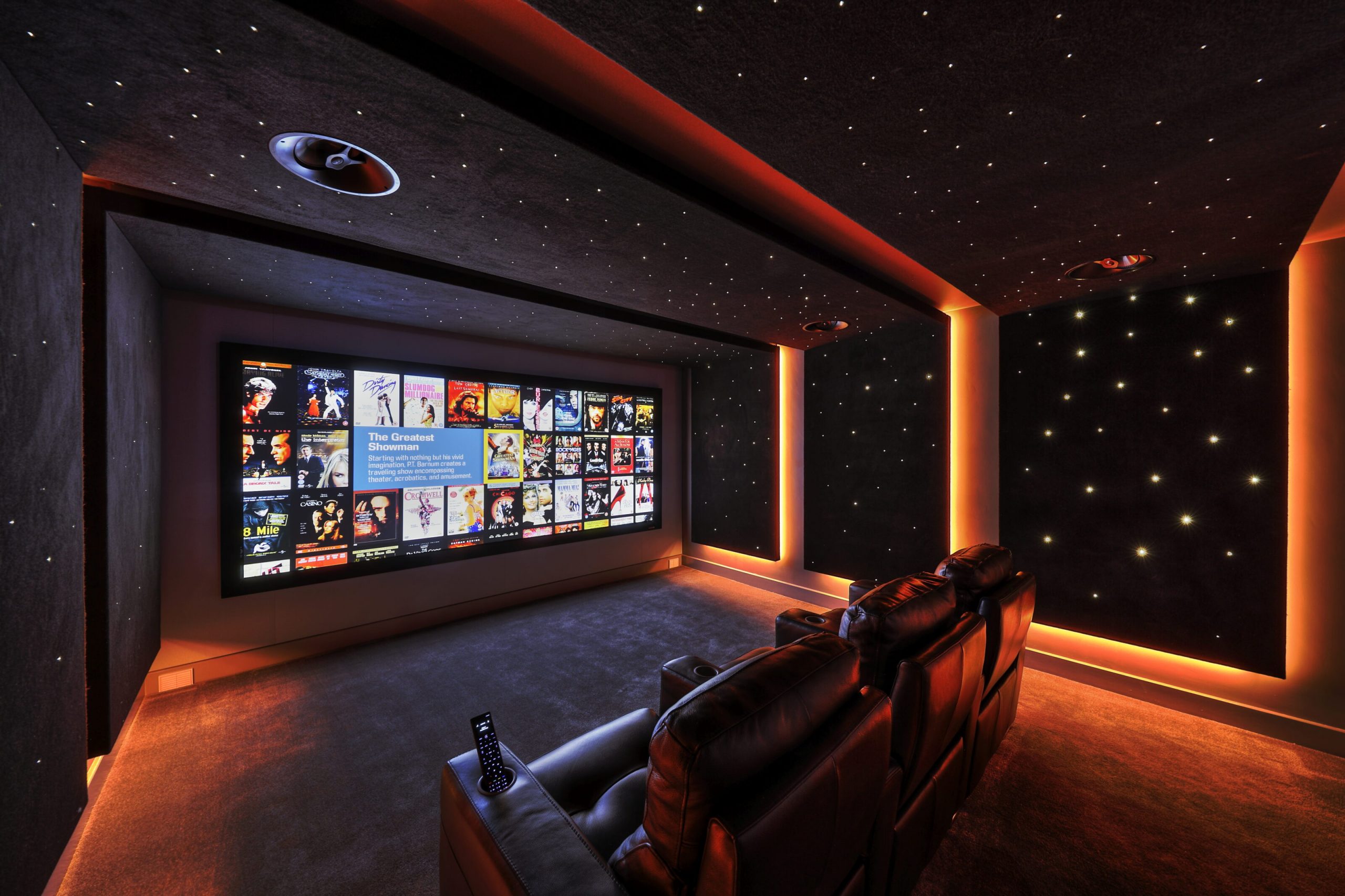Transforming a room in your dwelling into a cinema can be an exhilarating task, granting the opportunity to create a custom oasis for film evenings and binge-watching sessions. Still, diving into home theater installation without the right preparation can lead to some common pitfalls that may impede your desired setup. Whether it's choosing the wrong elements or overlooking essential layout aspects, oversights can be costly and labor-intensive.
In this overview, we will investigate the most frequent home cinema installation errors to avoid. Armed with knowledge on what you should to know before setting up a home theater, we’ll guide you navigate the complexities of tech and equipment options, room design, and upkeep. From selecting the best projector to obtaining optimal sound quality, this article will guarantee that your home cinema experience is nothing short of spectacular.
Key Elements for Home Cinema
Creating the perfect at-home movie experience commences with selecting the right elements that work in harmony. A premium projector or large screen is essential for delivering breathtaking visuals. When picking a projector, consider the image quality, brightness, and throw distance to make sure it fits your room's specifications. For those opting for a TV, investing in a 4K or 8K display will provide sharp, vibrant images that improve your viewing experience. The size of the screen should correspond to the distance from the seating area to reduce straining your eyes.
Next, audio plays a key role in enveloping you in a cinematic experience. Home Cinema Albury Hertfordshire surround sound system that includes a mix of speakers, subwoofers, and audio receivers is essential for achieving rich, dynamic audio. Choosing between wired and wireless options is also necessary, as each has its pros. Additionally, think about acoustic treatments in your room to further optimize sound quality, ensuring clarity and depth that mimic what you'd find in a professional theater.
Lastly, comfortable seating can elevate your home cinema from average to fantastic. Look for seating choices that provide adequate support, and envision incorporating recliners or cinema-style seats. Features such as cup holders and adjustable positions can enhance comfort for extended movie marathons. Design your seating arrangement to ensure all viewers has an clear line of sight of the screen, facilitating an ideal viewing experience and fostering a cozy, inviting atmosphere for movie nights.
Room Design and Design Tips
Forming the ideal environment for your personal theater begins with thoughtful room design. Begin by assessing the layout of your area. An optimal room generally has a rectangular shape, allowing for optimal viewing distance from the film surface. Arrange seating to directly look at the screen, reducing neck strain and ensuring all viewers has a satisfactory view. Furthermore, keeping a ratio in the room's size can elevate the overall cinematic experience by making the sound and visuals more captivating.
Illumination serves a crucial role in setting the atmosphere for film evenings. Think about a mix of general, task, and feature lighting to modify to multiple movie genres and times of day. Putting in dimmers can help you regulate brightness properly. To lessen distractions from outside light sources, select light-blocking curtains or shades that can fully darken the room when necessary. This management over lighting not only improves visual quality but also creates a comfortable cinema atmosphere.

Audio enhancements are also important in the layout and organization of your home cinema. Solid surfaces can create echoes and distort sound, diminishing from your viewing experience. Incorporating carpets, soft furnishings, and acoustic panels can help to reduce sound and improve audio performance. Placing speakers correctly will also boost sound quality, ensuring that everyone in the room gets the best audio experience achievable. By paying attention to these design elements, you can significantly enhance the enjoyment of your home theater.
Upkeep and Enhancements for Durability
To guarantee your home cinema system continues at peak performance, regular maintenance is essential. Dirt and debris can accumulate on your equipment, potentially impacting audio and visual quality. Schedule scheduled cleanings for your devices, including projector units and speakers, to maintain optimal functionality. Additionally, inspect cables and connections regularly to prevent any signal breaks. Organizing your setup organized not only boosts longevity but also aids in troubleshooting any issues that may arise.
Replacing components of your home cinema can greatly boost your viewing experience over time. As technology evolves, new audio and visual features become available, such as ultra-high-definition and super high-definition displays or high-end surround sound systems. Staying updated about the latest advancements will assist you figure out when to spend in upgrades. Budget your budget and prioritize which components will give you the most significant improvement to ensure your setup stays relevant and up-to-date.
Finally, consider implementing smart home integration into your cinema. This technology allows for more control over your audio and visual equipment, improving convenience and functionality. With smart systems, you can manage lighting, sound, and even streaming services for a smooth experience. As you upgrade and improve your home cinema, incorporating these smart features will keep your system aligned with current standards, ensuring it meets your entertainment needs for the foreseeable future to come.
